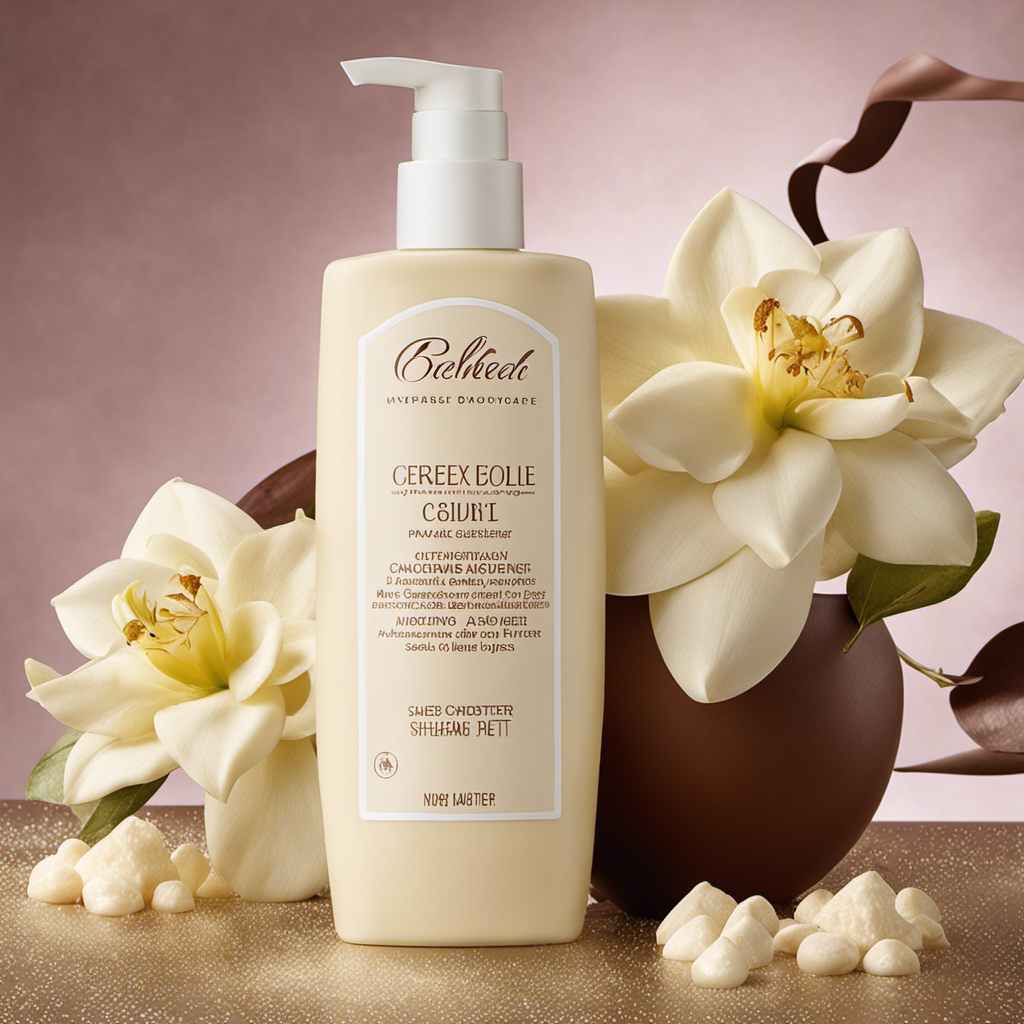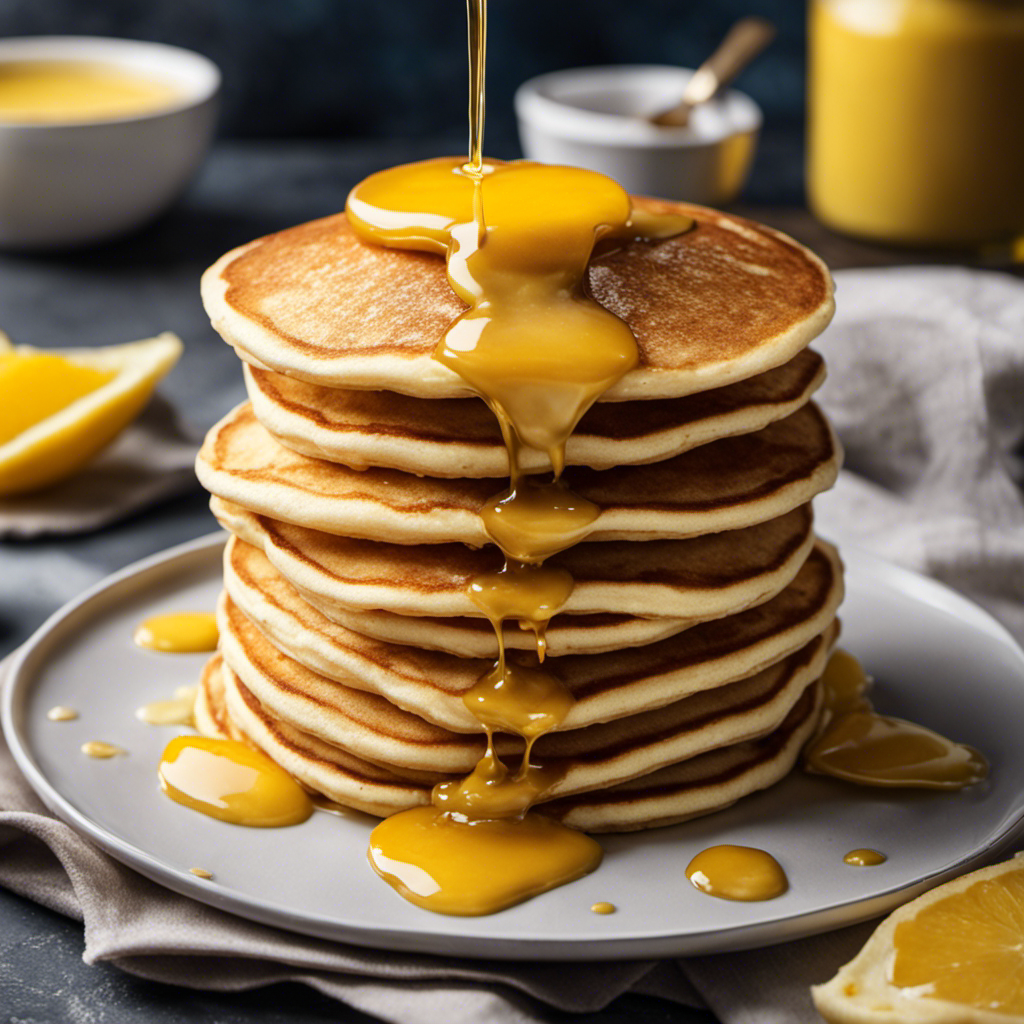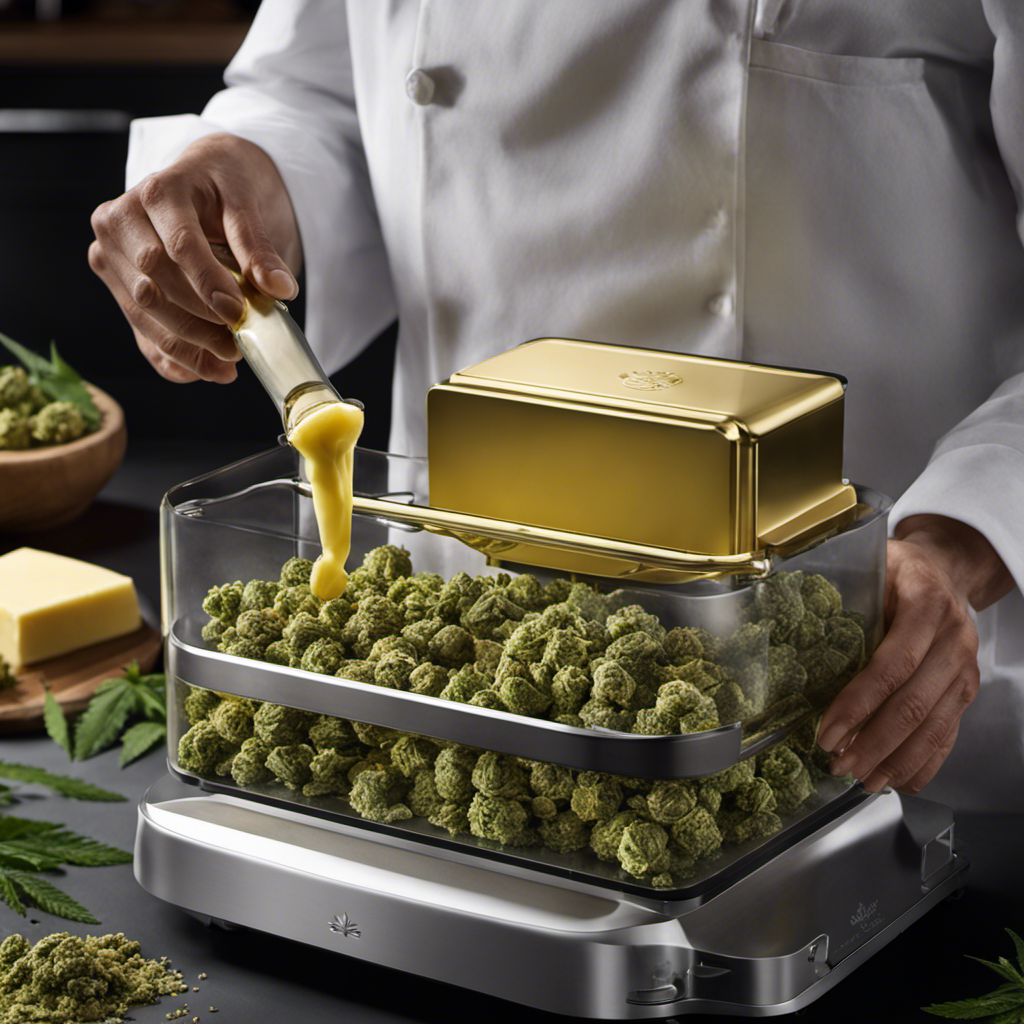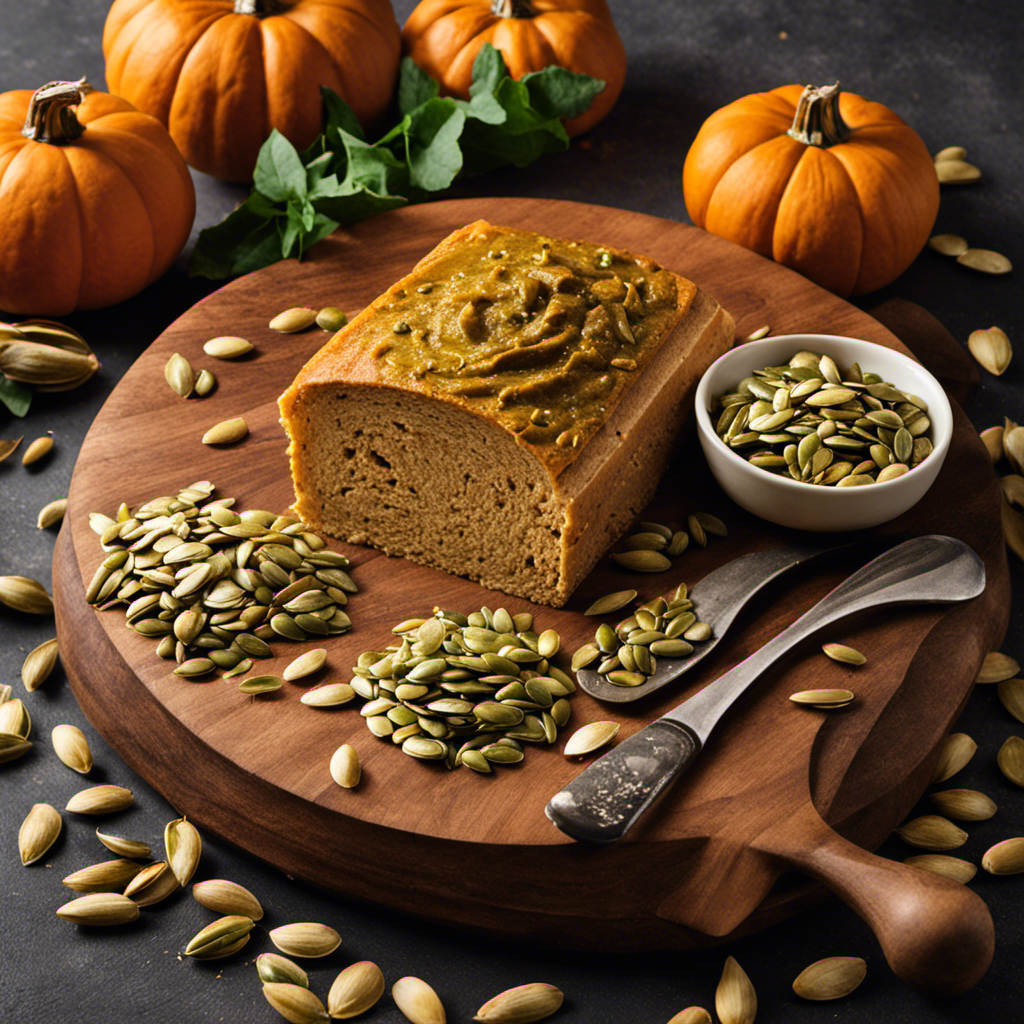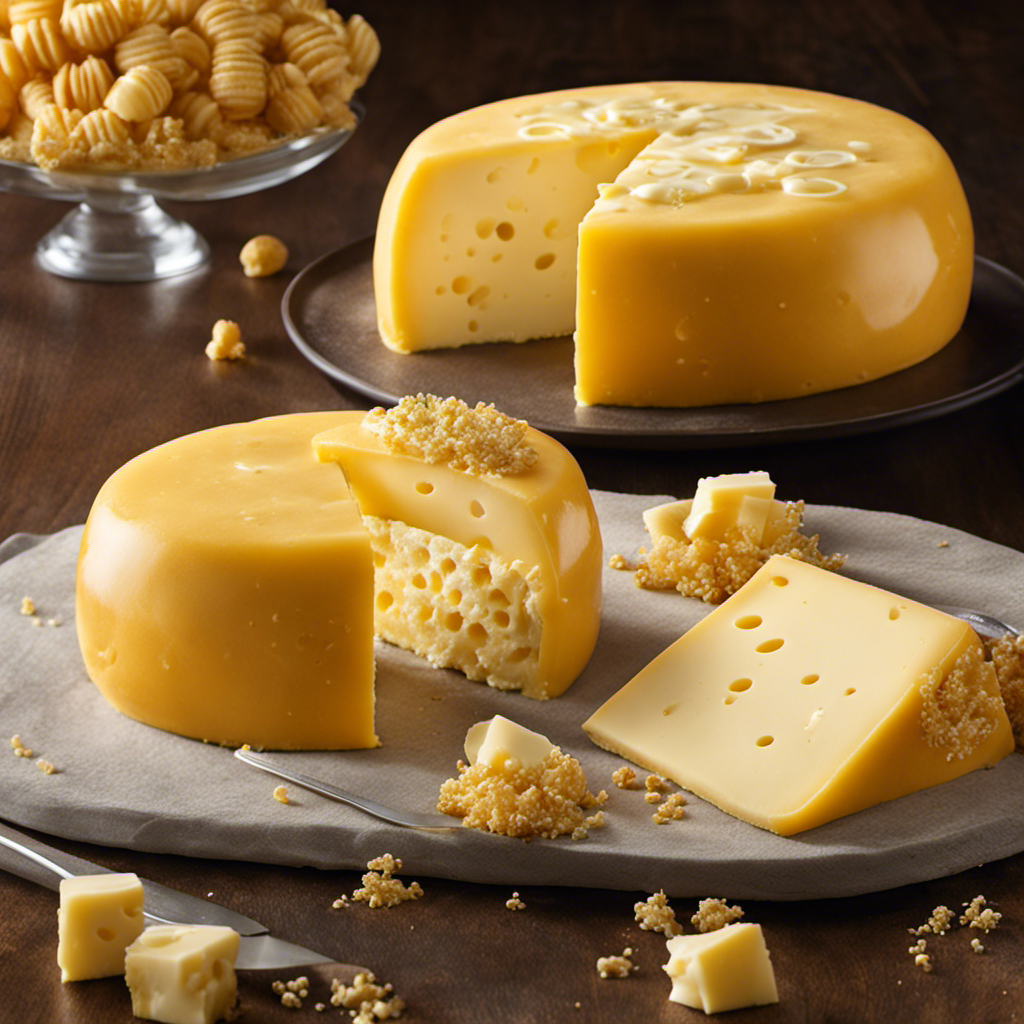As someone who loves skincare, I frequently ponder the age-old question: which is superior, cocoa butter or shea butter? This debate has ignited numerous discussions among beauty influencers and professionals.
In this article, we will explore the benefits of both cocoa butter and shea butter, examining their composition and comparing their skin moisturizing properties.
So, let’s dive into the world of these popular natural moisturizers and uncover the truth behind which one reigns supreme.
Key Takeaways
- Both cocoa butter and shea butter deeply moisturize the skin and improve its elasticity.
- Cocoa butter contains antioxidants that protect against free radicals, while shea butter promotes healing and reduces inflammation.
- Cocoa butter is better for improving skin elasticity and reducing inflammation, while shea butter is great for dry and damaged skin.
- Both cocoa butter and shea butter can be used as natural moisturizers and are excellent choices for treating dry skin.
Benefits of Cocoa Butter
I really love how cocoa butter deeply moisturizes my skin and improves its elasticity. When it comes to treating stretch marks, cocoa butter is often compared to shea butter. While both are effective, cocoa butter has been found to have a higher concentration of antioxidants, which help to repair damaged skin cells. These antioxidants also aid in preventing the breakdown of collagen, the protein responsible for maintaining skin elasticity.
Additionally, cocoa butter contains essential fatty acids that nourish and hydrate the skin, making it a great choice for those looking to fade stretch marks.
Apart from its benefits for the skin, cocoa butter also works wonders for the hair. It helps to improve hair texture, reduce breakage, and add shine and moisture.
Benefits of Shea Butter
Using shea butter has several benefits for the skin. It is a natural ingredient that is rich in vitamins and fatty acids, making it a great moisturizer and emollient. Shea butter has healing properties that can help soothe and repair damaged skin, including dryness, eczema, and dermatitis. Additionally, it contains anti-inflammatory compounds that can reduce redness and irritation.
Shea butter is also beneficial for hair care. Its moisturizing properties can nourish and hydrate the scalp, promoting healthy hair growth and preventing dandruff. It can also help to soften the hair, making it more manageable and reducing frizz.
To better understand the benefits of shea butter, let’s take a look at the following table:
| Benefit | Description |
|---|---|
| Moisturizing | Provides deep hydration to the skin and hair |
| Anti-inflammatory | Reduces redness and irritation on the skin |
| Healing properties | Helps soothe and repair damaged skin |
| Nourishing | Nourishes and hydrates the scalp, promoting healthy hair growth |
| Softening | Softens the hair, making it more manageable and reducing frizz |
Differences in Composition
When comparing the composition of shea butter and cocoa butter, it’s important to note the differences in their fatty acid profiles. Shea butter is primarily composed of stearic acid, oleic acid, and palmitic acid, while cocoa butter is predominantly made up of stearic acid, oleic acid, and linoleic acid. These differences in fatty acid composition can have varying effects on the skin.
Shea butter’s high content of stearic acid provides it with excellent moisturizing properties, making it a great choice for dry and damaged skin.
Cocoa butter’s high stearic acid content also contributes to its moisturizing abilities, but its linoleic acid content helps improve skin elasticity and reduce inflammation.
Additionally, the chemical composition of shea butter includes natural vitamins A, E, and F, which have antioxidant and anti-inflammatory effects on the skin.
Understanding the chemical composition of these butters helps in determining their effects on the skin. Now, let’s explore the comparison of their skin moisturizing properties.
Comparison of Skin Moisturizing Properties
Comparing the skin moisturizing properties, it’s evident that both cocoa butter and shea butter have their unique benefits and advantages.
When it comes to treating dry skin, both butters are effective. Cocoa butter contains a high amount of fatty acids, which help to deeply moisturize the skin and improve its elasticity. It also contains antioxidants that can help protect the skin from damage caused by free radicals.
On the other hand, shea butter is rich in vitamins A and E, which have been shown to promote healing and reduce inflammation. Moreover, shea butter has long-term hydration benefits, as it forms a protective barrier on the skin that helps to prevent moisture loss.
Therefore, both cocoa butter and shea butter are excellent choices for moisturizing and treating dry skin, providing nourishment and hydration for a healthy and glowing complexion.
Considerations for Different Skin Types
As someone with sensitive skin, I need to consider the potential irritants or allergens in skincare products. When it comes to choosing between cocoa butter and shea butter, it’s important to be aware of any allergies or sensitivities you may have. Here are some considerations for different skin types:
-
For those with allergies to cocoa butter:
-
Cocoa butter is derived from cocoa beans and may cause allergic reactions in some individuals.
-
It’s essential to perform a patch test before using products containing cocoa butter to avoid any adverse reactions.
-
If you experience itching, redness, or swelling after using cocoa butter, it’s best to avoid it altogether.
-
For individuals with sensitivity to shea butter:
-
Shea butter is derived from the nuts of the shea tree and can cause sensitivity in some people.
-
Patch testing is crucial to determine if you’ve a sensitivity to shea butter.
-
If you experience any discomfort or irritation, it’s advisable to opt for alternative skincare products.
Always consult with a dermatologist or skincare specialist if you’ve concerns or questions about specific ingredients and their potential effects on your skin.
Frequently Asked Questions
Can Cocoa Butter and Shea Butter Be Used Interchangeably in Skincare Routines?
In skincare routines, cocoa butter and shea butter can indeed be used interchangeably. Both have their own unique benefits for hair care and play a crucial role in natural DIY skincare products.
Cocoa butter is known for its rich moisturizing properties and ability to improve skin elasticity.
On the other hand, shea butter is highly nourishing and helps soothe dry, irritated skin.
Ultimately, the choice between cocoa butter or shea butter depends on personal preference and specific skincare needs.
Are There Any Potential Side Effects or Allergies Associated With Using Cocoa Butter or Shea Butter?
When it comes to potential side effects and allergies, it’s important to consider both cocoa butter and shea butter. While they’re commonly used in skincare routines, it’s crucial to be aware of any potential adverse reactions.
Allergies can vary from person to person, so it’s essential to patch test before using these ingredients. Additionally, some individuals may experience skin irritation or clogged pores when using cocoa butter or shea butter.
It’s always best to consult with a dermatologist for personalized advice.
Can Cocoa Butter or Shea Butter Help With Reducing the Appearance of Stretch Marks or Scars?
Reducing the appearance of stretch marks and scars is a common concern. There are various options available, but let’s focus on the effectiveness of cocoa butter and shea butter.
Both cocoa butter and shea butter have been touted for their potential benefits in improving the appearance of stretch marks and scars. Research suggests that cocoa butter may help improve the elasticity of the skin, while shea butter has been shown to possess anti-inflammatory properties.
However, it’s important to note that individual results may vary and consulting a dermatologist is recommended for personalized advice.
Are There Any Specific Recommendations for Using Cocoa Butter or Shea Butter on the Face?
When it comes to using cocoa butter or shea butter on the face, there are a few things to consider.
Both cocoa butter and shea butter have moisturizing properties that can benefit dry skin. However, cocoa butter is known for its potential to clog pores, which may not be ideal for acne-prone skin.
On the other hand, shea butter has anti-inflammatory properties that can help soothe irritated skin.
Ultimately, the choice between cocoa butter and shea butter depends on your skin type and personal preference.
How Do Cocoa Butter and Shea Butter Compare in Terms of Their Fragrance and Texture?
When comparing the fragrance and texture of cocoa butter and shea butter, it’s important to consider personal preferences and skin type.
Both have distinct aromas; cocoa butter has a rich, chocolate-like scent, while shea butter has a nutty fragrance.
In terms of texture, cocoa butter is solid at room temperature and melts easily on the skin, providing a smooth and creamy feel.
Shea butter, on the other hand, has a slightly grainy texture initially, but melts quickly upon contact, leaving a velvety finish.
Conclusion
In conclusion, both cocoa butter and shea butter have their own unique benefits and composition.
While cocoa butter is rich in antioxidants and can improve skin elasticity, shea butter is highly moisturizing and can soothe dry skin.
Interestingly, a study found that shea butter has a higher concentration of fatty acids compared to cocoa butter, making it potentially more effective in nourishing the skin.
Ultimately, the choice between cocoa butter and shea butter depends on individual preferences and the specific needs of one’s skin.
